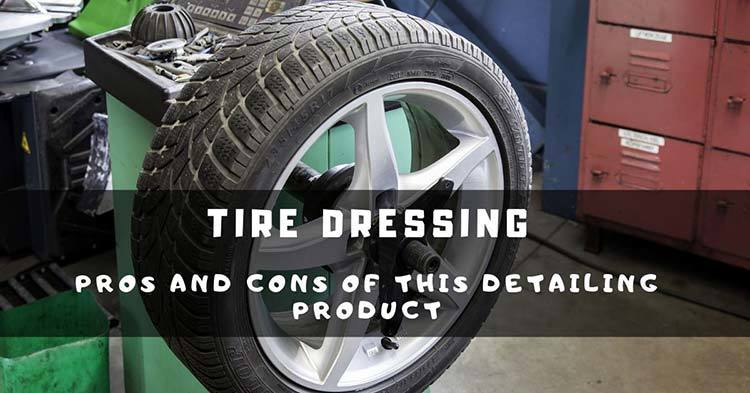
Tire Dressing: Pros and Cons of This Detailing Product
Tire dressing or "shine" is a detailing product you apply to your tires to make them look new, clean, and shiny. Tire dressing is used on a regular basis by car enthusiasts and detailing shops. Wheels and tires are critical to your vehicle's overall appearance but are frequently overlooked.
More...
When you consider that your tires are in constant contact with the road, they obviously suffer from the negative effects of oxygen, ultra-violet radiation, grease, brake dust, salt, water, grime, dirt, and road tar, it is completely understandable that they need a lot of care.
Tire Shine Purpose
Tire rubber degrades over time. Vehicle manufacturers actually recommend, no matter what the tire mileage is, that tires should be replaced after 5 years typically, as a way to prevent sudden failure from occurring.
From the perspective of a detailer, we not only want our tires to look new and nice, we also want to protect them against all of the elements that we discussed above. Tires that are properly cared for will significantly add to a well-detailed vehicle's appearance. They complete that "look" that is desired by auto detailers.
Solvent vs. Water Based
The Vehicle Lab details that tire dressing is available in two different types: solvent-based and water-based. Water-based dressing, is (usually) a milky-white liquid, that won't harm the rubber over time. Typically, water-based dressing combines synthetic polymers with naturally occurring oils to offer a satin-like, non-greasy finish - which is very similar to how a new tire looks.
There are also some tire dressings that have UVR blocking agents that help to keep the tires from hardening, fading, and cracking. All, or at least most, water-based dressings are noted as being environmentally friendly, which is a nice added bonus.
Solvent-based silicone dressing is often noted as a sticky, greasy, clear liquid, which leaves a glossy, wet film on the surface of the tire. Some solvent-based tire shines has a petroleum distillate solvent in them. Over time this might lead to premature cracking and drying of the surface of the tire.
The difference between solvent-based and water-based dressing is the carrier system that is used. A hydrocarbon silicone is used by solvent-based products, and water-based uses water.
Tire Dressing Pros
Tire Dressing Cons
Tire dressing should never be applied to tread since it can make them slippery. That is particularly important for motorcycles.
Manufacturer's instructions should always be followed and also wear protective gloves whenever you are applying a solvent-based product. Using tire dressing should be done on a case by case basis.
Although all of the above might sound complicated, it is actually quite a simple procedure that just takes a couple of minutes for each tire. Ultimately, you will end up with well-protected tires that look like they just came out of the showroom. Using a tire dressing product is the easiest and fastest way to provide your tires with a professional detailing appearance at just a fraction of the cost.
